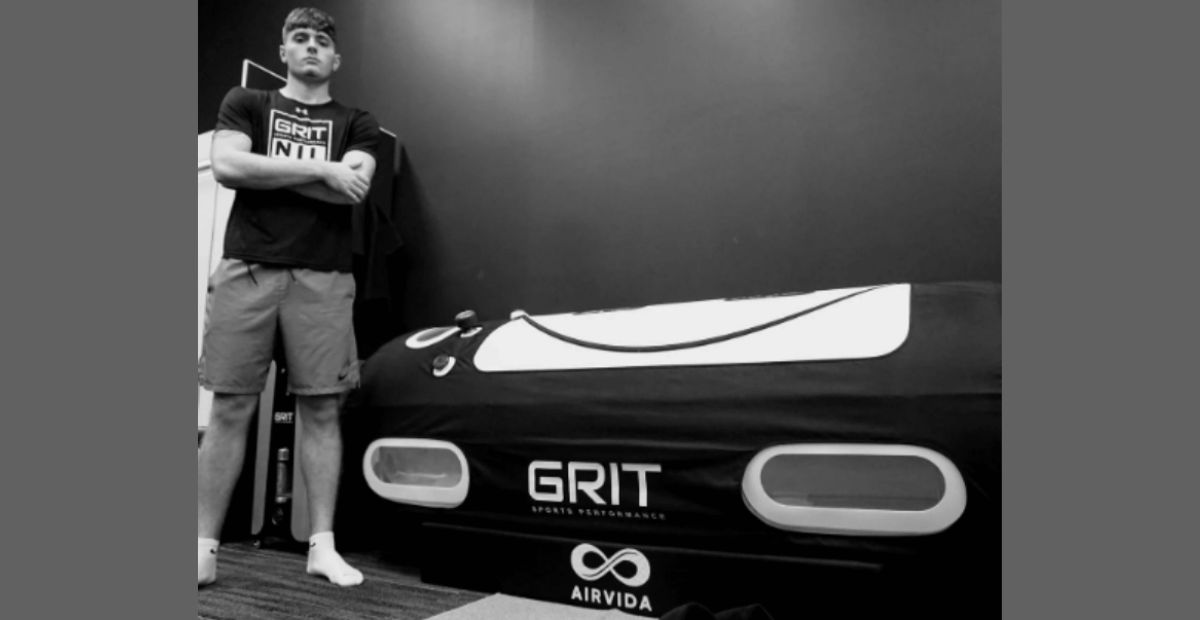Hyperbaric chamber for athletes technology is becoming an essential tool in modern sports recovery, helping both professional and amateur competitors speed up healing, boost performance, and maintain peak condition. By supplying the body with oxygen at higher-than-normal pressures, these chambers promote faster tissue repair, reduce inflammation, and support overall recovery between training sessions.
This article will discuss how hyperbaric chambers work, the science behind their recovery benefits, ideal session schedules, and how to combine them with other therapies for maximum impact. We’ll also cover measurable results athletes can expect when integrating HBOT into their training plan. Stay with us as we explore how this advanced recovery method can help you perform, heal, and train at your absolute best.
How a Hyperbaric Chamber Works for Athletes
A hyperbaric chamber for athletes functions by delivering 100% oxygen at pressures higher than those we experience at sea level. Under these conditions, oxygen dissolves more efficiently into the blood plasma, allowing it to reach areas of the body where circulation is limited due to fatigue, inflammation, or injury. This process supports faster tissue repair, helps reduce swelling, and promotes overall cellular regeneration.
For athletes, the increased oxygen availability means more than just quicker recovery; it also enhances muscle endurance, optimizes cardiovascular efficiency, and supports the body’s ability to flush out lactic acid after intense training sessions. By creating an environment where oxygen delivery is maximized, a hyperbaric chamber for athletes offers a scientifically backed approach to maintaining consistent performance and reducing the risk of long-term injury.
Potential Recovery Benefits of Hyperbaric Oxygen Therapy

A hyperbaric chamber for athletes may provide unique recovery advantages. Here are the benefits of this approach that could potentially support training recovery and long-term athletic performance.
1. May Promote Faster Injury Healing
Soft tissue injuries, muscle strains, and even minor fractures may potentially respond positively to the oxygen-rich setting of a hyperbaric chamber for athletes. This environment may help support collagen production, blood vessel development, and cellular repair, contributing to overall recovery support.
2. Reduced Inflammation and Swelling
Inflammation is part of the body’s natural repair process, but excessive swelling can delay recovery and cause discomfort. HBOT reduces inflammation by delivering oxygen deep into tissues and promoting better circulation.
3. Improved Endurance and Energy
Regular sessions in a hyperbaric chamber for athletes can enhance mitochondrial function, which plays a key role in energy production. This means athletes can train harder for longer without hitting the same fatigue wall.
4. Better Post-Workout Recovery
After high-intensity training, the body accumulates waste products like lactic acid. The oxygen-rich environment speeds up metabolic waste removal, helping athletes feel fresher and ready for the next workout.
5. Potential Cognitive and Mental Benefits
Mental fatigue can impact performance. A hyperbaric chamber for athletes may help support brain oxygen delivery, which some associate with sharper focus, quicker decisions, and improved mental readiness during training or competition.
When to Schedule Hyperbaric Sessions in Your Training Cycle
Timing is everything when using a hyperbaric chamber for athletes. For general recovery, many athletes schedule sessions immediately after competition or intense training to minimize soreness and promote healing. Those recovering from injury may benefit from more frequent sessions, sometimes daily, until mobility and comfort improve.
Pre-competition sessions can help optimize oxygen saturation, giving athletes a potential performance edge. However, the exact frequency and timing should be tailored to individual needs, sport demands, and recovery goals. Consulting with a sports medicine professional can help determine the ideal schedule.
Spotlight on Hyperbaric Oxygen Chamber Models
Choosing the right hyperbaric chamber plays a big role in ensuring both comfort and consistency in your recovery routine. Airvida Chambers provides a range of dependable options in soft-shell and hard-shell designs, each catering to specific user needs, whether for home wellness or professional recovery facilities.
Soft-Shell Hyperbaric Oxygen Chambers: Ideal for At-Home Use and Ease of Setup

Soft-shell hyperbaric chambers are a practical choice for athletes, wellness enthusiasts, or anyone looking for a more accessible way to integrate mild hyperbaric oxygen therapy into their daily life. Operating at around 1.3 ATA, these chambers are well-suited for non-invasive, regular sessions. Thanks to their lightweight build and portability, they fit seamlessly into bedrooms, home gyms, or wellness areas without requiring special construction or complex installations.
Featured Soft-Shell Chambers from Airvida:
Hard-Shell Hyperbaric Oxygen Chambers: Designed for Performance and Professional Applications

Hard-shell hyperbaric chambers may be more suitable for advanced recovery programs or for use in professional wellness centers. With the ability to reach pressures between 1.5 ATA and over 2.0 ATA, these models allow for a deeper oxygen experience and more intensive sessions. Built for durability and user comfort, they often come with additional safety features and space to make longer recovery sessions more relaxed.
Featured Hard-Shell Chambers from Airvida:
-
Airvida Ultra 1.3-2.0 ATA Hard Shell Lying Hyperbaric Chambers
-
Airvida Elite 1.3-2.0 ATA Hard Shell Sitting Hyperbaric Chamber
Safety Considerations and Who Should Avoid HBOT
A hyperbaric chamber for athletes is generally safe when used under proper guidance. However, certain individuals should avoid HBOT, including those with untreated pneumothorax (collapsed lung), severe respiratory infections, or certain ear/sinus conditions.
Potential side effects, though rare, can include mild ear discomfort, temporary changes in vision, or sinus pressure. Always consult with a medical professional before starting HBOT, especially if you have pre-existing health conditions or are recovering from surgery.
Measuring Results and Tracking Progress
To maximize the benefits of a hyperbaric chamber for athletes, it’s essential to track performance and recovery metrics. Some useful benchmarks include:
-
Reduced recovery time between workouts.
-
Improved endurance test scores.
-
Faster healing of minor injuries.
-
Enhanced mental focus and reduced fatigue.
By keeping detailed training and recovery logs, athletes can determine whether HBOT is delivering the expected improvements over weeks or months.
Final Thoughts
Athletic performance isn’t built solely in the gym or on the field; it’s also forged during the recovery process. Prioritizing smart, efficient recovery strategies can help athletes maintain consistency, reduce downtime, and maximize the benefits of their training efforts over time.
A hyperbaric chamber for athletes may potentially be a valuable addition to a well-rounded recovery plan, offering benefits that align with both short-term performance goals and long-term wellness. From soft-shell portable models to durable hard-shell units, there’s a solution to fit various training demands and recovery preferences. To learn more about these options or get tailored recommendations, contact Airvida Chambers today.
Frequently Asked Questions on Hyperbaric Chamber for Athletes
Do hyperbaric chambers help athletes?
Yes, a hyperbaric chamber may support recovery by increasing oxygen delivery to muscles and tissues. This can help reduce fatigue, promote healing, and improve readiness for the next training session, making it a popular recovery tool among both amateur and professional sports enthusiasts.
Did Michael Phelps sleep in a hyperbaric chamber?
Michael Phelps has publicly mentioned using a hyperbaric chamber during his competitive swimming career. Reports indicate he incorporated it into his recovery routine to help his body adapt and recover from intense training cycles, though specific details about his sleep patterns inside the chamber are not widely documented.
Does LeBron James use a hyperbaric chamber?
Yes. LeBron James has shared in interviews and social media posts that he uses a hyperbaric chamber as part of his extensive recovery regimen. It’s one of several recovery tools he invests in to maintain peak performance throughout his demanding NBA seasons and off-season training periods.
Does breathing oxygen help athletes?
Breathing higher concentrations of oxygen may potentially help athletes recover faster by improving oxygen availability to tissues, reducing fatigue, and supporting repair processes. This is why hyperbaric oxygen therapy is sometimes integrated into athletic recovery programs, though individual results can vary depending on training load and overall health.
Should you do HBOT before or after a workout?
Most athletes choose to do HBOT after workouts to potentially aid muscle recovery and reduce soreness. However, some may use it before training to help oxygenate tissues. The optimal timing often depends on individual goals, training intensity, and recovery needs, so personal experimentation is recommended.
You May Also Want to Read
The Athlete's Guide to Using Hyperbaric Chambers for Quicker Muscle Recovery
How to Choose the Best Hyperbaric Oxygen Chamber for Sale: Key Features to Consider
Healing Chamber: 5 More Benefits of Hyperbaric Oxygen Chambers
Disclaimer
Airvida and partners' advice does not constitute medical advice and is intended for informative and educational purposes only, with no medical or non-medical claims being made. While research & studies show the potential Hyperbaric Oxygen Therapy (HBOT) and Hyperbaric Air Therapy (HBAT) may have implied benefits, individual results may vary. It is required by Airvida & Partners to consult with doctors before being approved for Hyperbaric Therapy (HBOT & HBAT). Read More HERE




